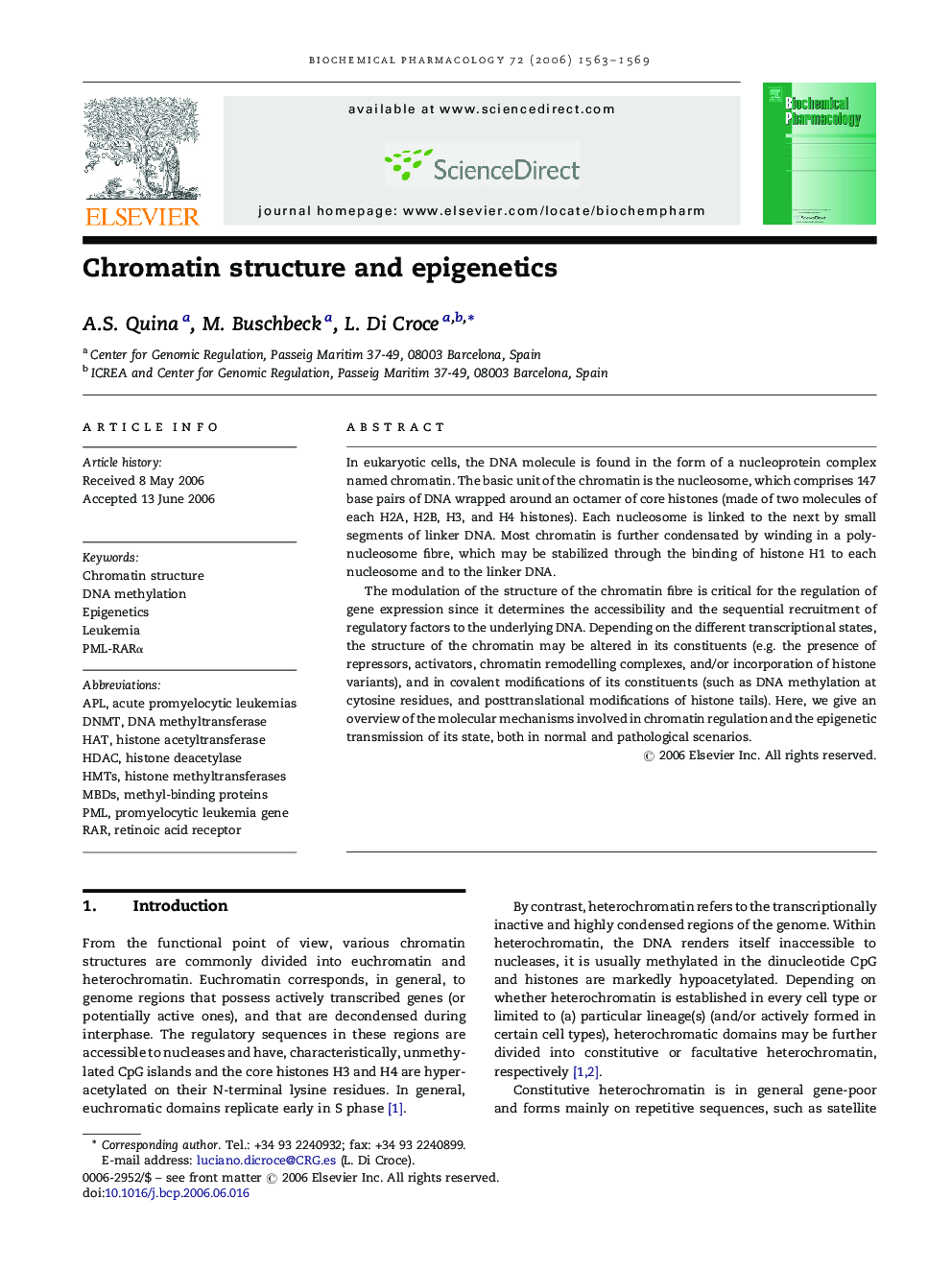| کد مقاله | کد نشریه | سال انتشار | مقاله انگلیسی | نسخه تمام متن |
|---|---|---|---|---|
| 2515096 | 1118500 | 2006 | 7 صفحه PDF | دانلود رایگان |

In eukaryotic cells, the DNA molecule is found in the form of a nucleoprotein complex named chromatin. The basic unit of the chromatin is the nucleosome, which comprises 147 base pairs of DNA wrapped around an octamer of core histones (made of two molecules of each H2A, H2B, H3, and H4 histones). Each nucleosome is linked to the next by small segments of linker DNA. Most chromatin is further condensated by winding in a polynucleosome fibre, which may be stabilized through the binding of histone H1 to each nucleosome and to the linker DNA.The modulation of the structure of the chromatin fibre is critical for the regulation of gene expression since it determines the accessibility and the sequential recruitment of regulatory factors to the underlying DNA. Depending on the different transcriptional states, the structure of the chromatin may be altered in its constituents (e.g. the presence of repressors, activators, chromatin remodelling complexes, and/or incorporation of histone variants), and in covalent modifications of its constituents (such as DNA methylation at cytosine residues, and posttranslational modifications of histone tails). Here, we give an overview of the molecular mechanisms involved in chromatin regulation and the epigenetic transmission of its state, both in normal and pathological scenarios.
Journal: Biochemical Pharmacology - Volume 72, Issue 11, 30 November 2006, Pages 1563–1569